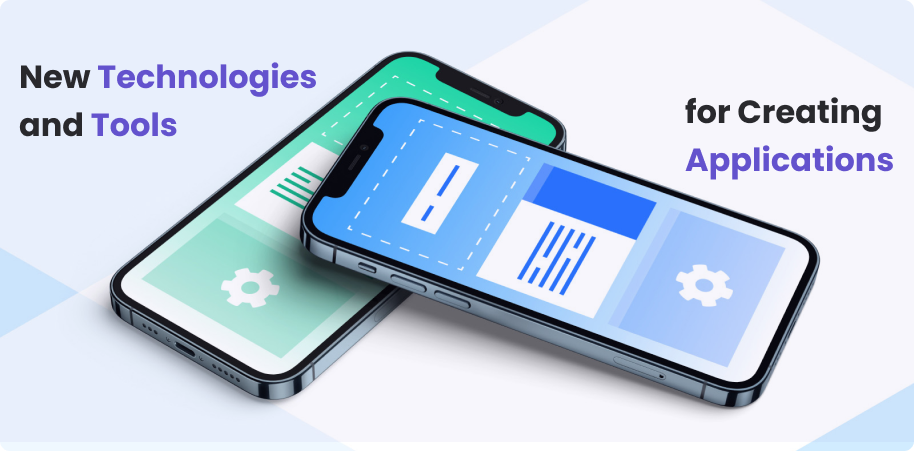Creating applications is a complex process that involves a number of different stages and requires a range of skills and expertise.
As technology continues to advance, new tools and technologies are emerging to help developers create applications faster and more efficiently than ever before. In this article, we’ll take a look at some of the most exciting new technologies and tools for creating applications, and what benefits they offer.
New Technologies and Tools
Low-code and no-code platforms
Low-code and no-code platforms have gained significant popularity in recent years, as they allow developers to create applications without having to write all the code from scratch. These platforms provide a visual interface for creating and connecting different components, making it easy to create complex applications with minimal coding. Examples of low-code and no-code platforms include Microsoft PowerApps, Appian, and OutSystems.
Progressive Web Apps (PWAs)
Progressive Web Apps are web applications that provide a native-app-like experience to users, but are built using web technologies like HTML, CSS, and JavaScript. PWAs offer a number of benefits, including offline support, faster load times, and improved user engagement. With the rise of mobile devices, PWAs are becoming an increasingly popular way to build mobile applications.
Serverless computing
Serverless computing allows developers to build applications without having to manage servers or infrastructure. Instead, they can focus on writing the code, and the cloud provider takes care of scaling and managing the infrastructure. This can significantly reduce development time and costs, as well as improve scalability and reliability. Examples of serverless computing platforms include AWS Lambda, Azure Functions, and Google Cloud Functions.
Microservices architecture
Microservices architecture is an approach to building applications that involves breaking them down into small, independent services that communicate with each other through APIs. This makes it easier to scale and maintain the application, as changes to one service do not affect the others. Microservices architecture is becoming increasingly popular, particularly in cloud-native environments.
Artificial intelligence and machine learning
Artificial intelligence (AI) and machine learning (ML) are increasingly being used in applications to provide advanced capabilities, such as natural language processing, image recognition, and predictive analytics. With the growth of AI and ML tools and frameworks, it is becoming easier for developers to incorporate these capabilities into their applications, even if they don’t have extensive experience in these areas. Examples of AI and ML frameworks include TensorFlow, Keras, and PyTorch.
Blockchain
Blockchain is a distributed ledger technology that provides a secure and transparent way to record transactions. It has a wide range of applications, including supply chain management, finance, and identity verification. With the development of blockchain platforms like Ethereum and Hyperledger, it is becoming easier for developers to build applications that leverage blockchain technology.
Containers
Containers provide a lightweight and portable way to package applications and their dependencies, making it easier to deploy and scale them. With the rise of container platforms like Docker and Kubernetes, developers can build, deploy, and manage applications in a more efficient and scalable way.
Internet of Things (IoT)
The Internet of Things refers to the growing network of physical devices, vehicles, and other objects that are connected to the internet and can collect and exchange data. With the rise of IoT platforms like AWS IoT and Azure IoT, developers can build applications that integrate with IoT devices and leverage the data they collect.
Chatbots
Chatbots are computer programs that can simulate conversation with human users, often using natural language processing and machine learning. They are becoming increasingly popular for customer service and support, as well as for marketing and sales. With the development of chatbot platforms like Dialogflow and Microsoft Bot Framework, it is becoming easier for developers to create chatbots without having to build all the underlying technology from scratch.
Augmented Reality (AR) and Virtual Reality (VR)
AR and VR are technologies that allow users to interact with virtual objects and environments in the real world. They are becoming increasingly popular for gaming and entertainment, as well as for training and education. With the development of AR and VR platforms like Unity and Unreal Engine, it is becoming easier for developers to create immersive applications that leverage these technologies.
In conclusion, there are many exciting new technologies and tools available for creating applications. Whether you’re building a mobile app, a web app, or an enterprise application, these technologies can help you to build better, faster, and more innovative applications. By keeping up with the latest trends and developments in the industry, developers can stay ahead of the curve and deliver the best possible applications to their users.


 Telegram
Telegram 